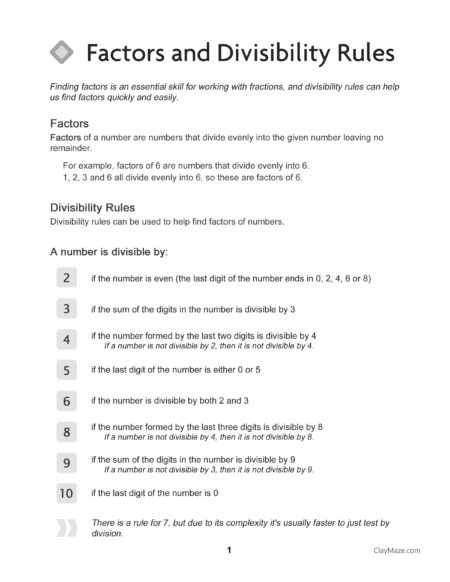Divisibility rules, the mathematical shortcuts that determine if one number can be evenly divided by another, are more than just time-savers. They are the gateway to understanding fractions, a fundamental concept that students encounter from elementary school through high school and beyond.
Understanding divisibility rules is like having a secret decoder ring for numbers. It empowers students to quickly and efficiently break down numbers into their components, a skill that is particularly useful when working with fractions.
As students progress with fractions, they move beyond the basics of what fractions represent. They delve into more complex operations such as simplifying fractions, adding and subtracting fractions, and comparing fractions. All these skills require a solid understanding of factors, which is where divisibility rules come into play.
By mastering divisibility rules, students equip themselves with the tools to simplify fractions to their lowest terms, a crucial step in fraction arithmetic. For example, knowing immediately that a number is divisible by 9 allows students to quickly recognize a fraction like 27/36 as 3/4.
Below is a printable instruction sheet on the divisibility rules followed by an example showing the use of the rules on a 4 digit number. Click the images below to download the printable pdf’s.
Download the printable worksheet below to practice the divisibility rules. The file is a 2 page pdf with the answers on the second page. Click the image below to download the pdf file.
The instruction pages above are from the book Mastering Fractions with Factors and Multiples.
Mastering Fractions with Factors and Multiples teaches these divisibility rules, while offering plenty of practice problems to practice and reinforce their understanding. The workbook also explores factors and multiples, and how they intertwine with fraction arithmetic. Each section is thoughtfully designed to build upon the previous, ensuring a seamless learning progression.
This instructional workbook is a valuable tool designed to not just teach, but to foster understanding and application of these fundamental mathematical concepts.




